nomorebigideas
Getting To Know The Place
- 8/4/24
- 39
- 42
- 18
Yes same procedure as what we’re doing with the 6610. 1675 is more easy, because the text is not so small. Unlike the 6610 text…I don’t have the dial in hand.
Anyway, its many hours past my bedtime but cant sleep… going to try once more.
Also, im considering the pad printing route…
EDIT: This is another gmt dial (not tropical), same procedure. But this is the 6610 thread
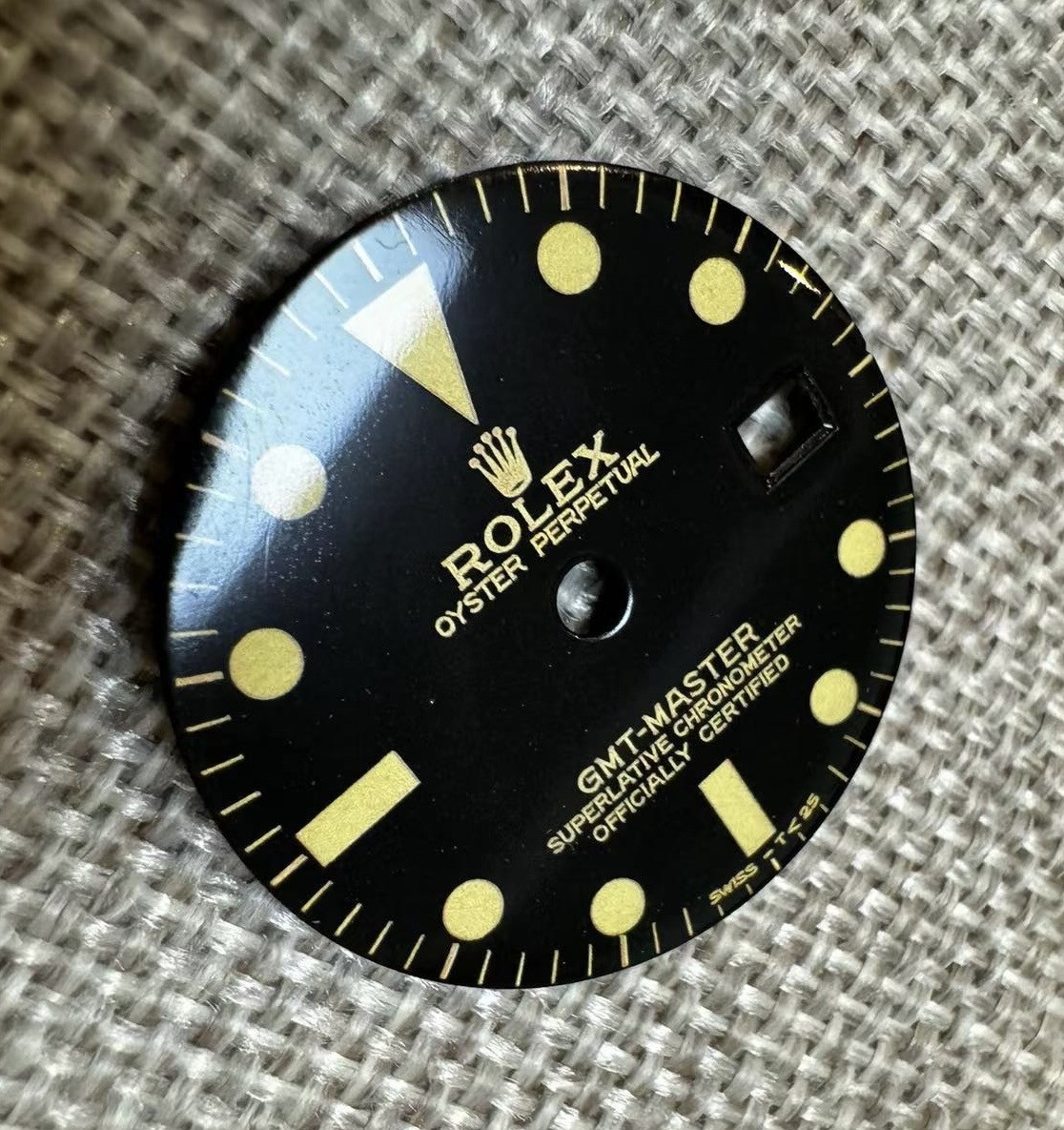
e3ae3f75b4183805432d014afd1c6a5a
Image e3ae3f75b4183805432d014afd1c6a5a hosted in ClickPix.orgclickpix.org
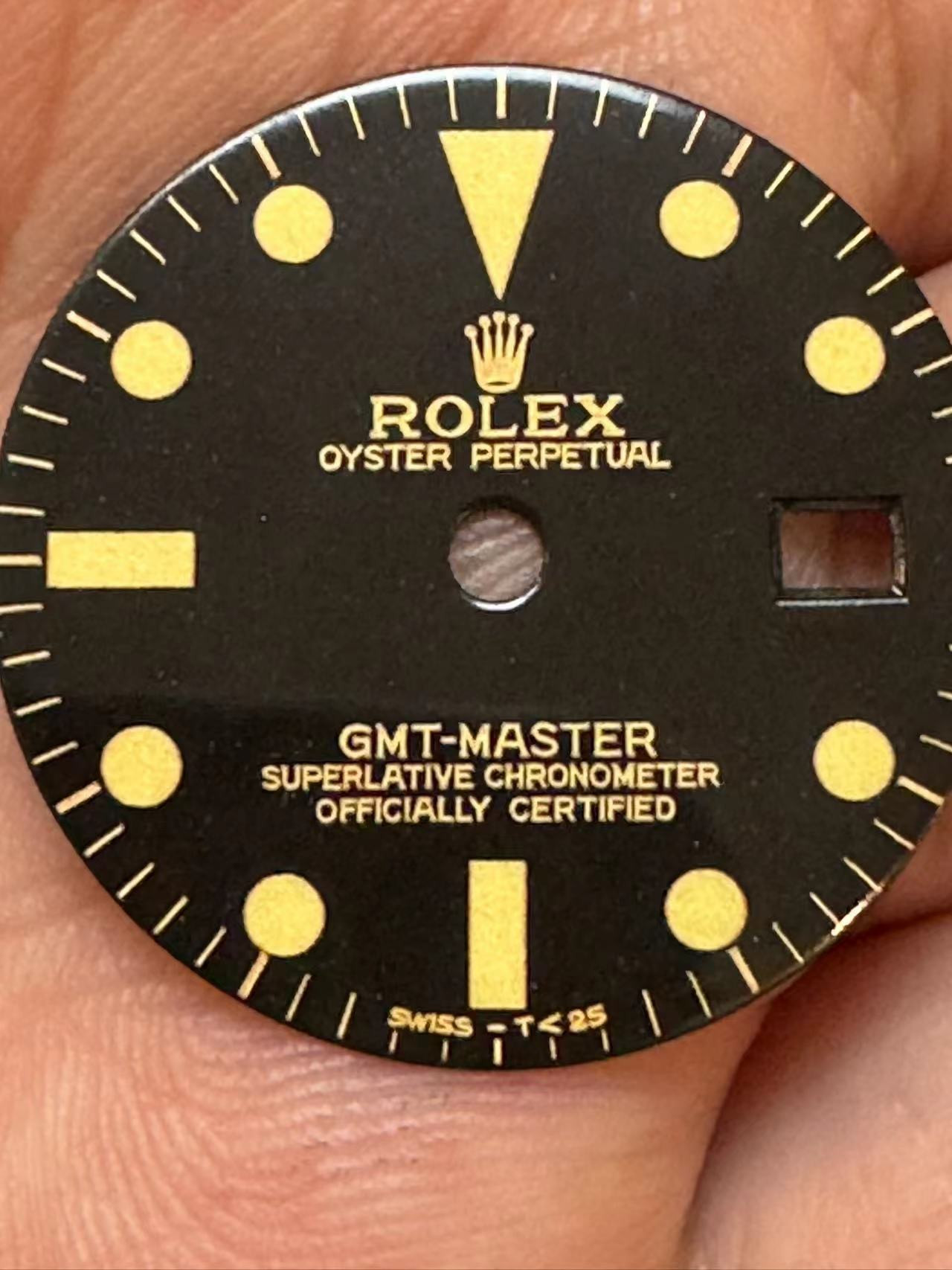
cd76f0cd21a793e444dc8bd089011e0b
Image cd76f0cd21a793e444dc8bd089011e0b hosted in ClickPix.orgclickpix.org
the laser will work with the blackened brass dial, however the back is a chemical conversion of the surface, so if you lasered away the text, you wouldn't have polished brass beneath it. You would have to have an electroplated surface to get the polished brass beneath. Go google Laser clean penny and you can get an idea of what shine you would get with copper. Here is a short video.I really like your dial result with this laser method. Congratulations! Looking forward to your final result.
I have two questions:
1. where did you get the 1675 blank dial - especially the dial with the date window is hard to find.
2. do you think the laser method could work also at a blacked brass dial?
Matz,I really like your dial result with this laser method. Congratulations! Looking forward to your final result.
I have two questions:
1. where did you get the 1675 blank dial - especially the dial with the date window is hard to find.
2. do you think the laser method could work also at a blacked brass dial?
First off, I don't know the answer. But after going through countless high resolution photos of late 50's through mid to late 60's 1675 dials, the texts were definitely etched. I don't think overly polished is necessary if you can catch the exposed brass in time and coat it to prevent further oxidation and darkening. I "think" the laser would work better than we think.the laser will work with the blackened brass dial, however the back is a chemical conversion of the surface, so if you lasered away the text, you wouldn't have polished brass beneath it. You would have to have an electroplated surface to get the polished brass beneath. Go google Laser clean penny and you can get an idea of what shine you would get with copper. Here is a short video.
Bracelet was bought on eBay, advertised as Italian New Old Stock.Stunning bracelet - gen? Also where did you find 55 end links? Gen also?
Thank you for the kind words.I have two questions:
1. where did you get the 1675 blank dial - especially the dial with the date window is hard to find.
2. do you think the laser method could work also at a blacked brass dial?
See the reply above.I too would love to find something with the bevel.
I haven't done the (insane) amount of research on 1675/GMT dials, as opposed to explorers and 6610's in particular - so I can't speak of that.photos of late 50's through mid to late 60's 1675 dials
I agree. It doesn't oxidize in a whim. You've got plenty of time to lacquer it. With lacquer applied it looks absolutely stunning. Let's not forget these are vintage watches. Having a 100% perfect, glossy dial would just look too new and modern, in my opinion.I don't think overly polished is necessary if you can catch the exposed brass in time and coat it to prevent further oxidation and darkening. I "think" the laser would work better than we think.
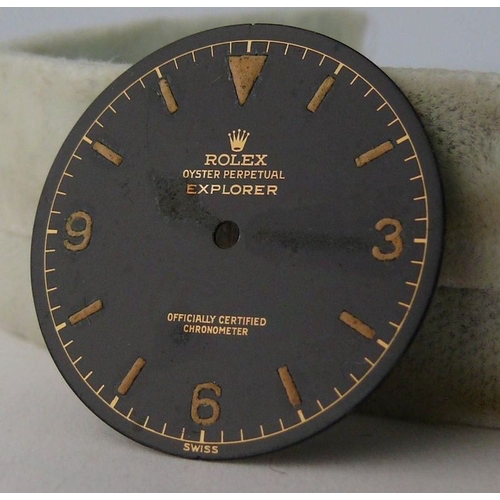
Amazing feedback, thank you!Bracelet was bought on eBay, advertised as Italian New Old Stock.
Endlinks are from WSO (https://www.ebay.co.uk/itm/174060103864)
Thank you for the kind words.
1. The blank dial is custom made. The date window is stamped, including the bevel - by a factory in China.
2. The dials shown in pictures are blacked brass dials. First the "blank" is galvanic coated, then lasered, then lacquer applied.
See: https://imgur.com/a/K5PEras (this was a test dial, without lacquer applied)
See the reply above.
I haven't done the (insane) amount of research on 1675/GMT dials, as opposed to explorers and 6610's in particular - so I can't speak of that.
The Chinese man is more into old GMT models. I like them, don't get me wrong. And I'd love to own a tropical 1675 build one day. But I probably won't afford another build at this level for a long time. (The 6610 project is a money pit)
I agree. It doesn't oxidize in a whim. You've got plenty of time to lacquer it. With lacquer applied it looks absolutely stunning. Let's not forget these are vintage watches. Having a 100% perfect, glossy dial would just look too new and modern, in my opinion.
Rolex did pad printing, and often applied a layer of gold on the pad to apply onto the dial. Something I've thought about is to get the blank dial gold plated with a certain thickness, thick enough so that there's still gold left once it's lasered. But my Chinese friend and I are also looking at pad printing projects.
After some trial and error I found out his laser has a precision issue. It's advertised at 0,01mm - yet the dot is fuzzy and not within this accuracy. We've sent a test to a factory, with a fibre laser to see if the precision increases using a different laser. If the result is better, my friend will upgrade his lasermachine.
Yes this is trial and error… for every vector/design is has to be adjusted.Did you pinpoint the laser (height to object) distance?
Theres a lot of variables that you need to get right.-precise distance (not as easy as it sounds)
-adjusting the dot spacing to the power setting (which you already mentioned)
what makes you say etched? Do you see the tell tale granular sign of etching on the brass? I am really surprised dulled brass would catch the light. I could try etching some brass with the template where everything is black so only the numbers text etc get etched. Then removed the mask and paint everything. Sand off the top layer so hopefully the only paint that remains is in the etched parts then plate/use acids whatever. Then remove the paint with acetone to reveal the brass etching. IF this works the acids wouldn effect the width of the details as they are now predefined by the etching. Do you think micro recessed etching if painted would resist sanding? As in would it be deep enough?First off, I don't know the answer. But after going through countless high resolution photos of late 50's through mid to late 60's 1675 dials, the texts were definitely etched. I don't think overly polished is necessary if you can catch the exposed brass in time and coat it to prevent further oxidation and darkening.
Probably not. I doubt you can sand precisely enough to remove micro layers whilst not touching the etched depth.Do you think micro recessed etching if painted would resist sanding? As in would it be deep enough?
I've definitely seen etching, but it's also possible that various chemical exposures caused that etching over time. However it occurred, it's that etching, combined with the negative relief, that has me convinced. On top of this, the white base layers of the dial indices are sometimes recessed too. It makes me think they were possibly etched prior to their silk screening.what makes you say etched? Do you see the tell tale granular sign of etching on the brass? I am really surprised dulled brass would catch the light. I could try etching some brass with the template where everything is black so only the numbers text etc get etched. Then removed the mask and paint everything. Sand off the top layer so hopefully the only paint that remains is in the etched parts then plate/use acids whatever. Then remove the paint with acetone to reveal the brass etching. IF this works the acids wouldn effect the width of the details as they are now predefined by the etching. Do you think micro recessed etching if painted would resist sanding? As in would it be deep enough?
I think I could just do what I have been doing but after I wipe away the toner to reveal the brass, place the dial in ferric chloride to eat away at the exposed brass for a bit. I’ll give that a tryCouldn't you tropicalize the brass dial, apply a template where only numbers/texts are exposed, then acid etch?
That sounds much easier. I was assuming the ferric chloride would etch the coating away as it does to raw brass.I think I could just do what I have been doing but after I wipe away the toner to reveal the brass, place the dial in ferric chloride to eat away at the exposed brass for a bit. I’ll give that a try
Yes, it ist the sexy bevel around the edge of the date window ;-). I could not found any blank dial with sexy bevel and the correct position for a 3135 movement. Raffles is a good but still expensive way to go.Matz,
Are you referring to the 3135 (really 1570) date window placement, or asking about that sexy bevel around the edge of the date window? Only asking because I've found nothing with the beveled edge, but I did get some dials off AliX where the window placement is correct. I too would love to find something with the bevel. Actually, $35 is more than $10, but the Raffles 1675 dials do have a bevel.
Your assumption was correct. Ferric chloride does eat away the patina. Would you think it would be the same case for a “gentler” etchant?That sounds much easier. I was assuming the ferric chloride would etch the coating away as it does to raw brass.
Darn!Your assumption was correct. Ferric chloride does eat away the patina. Would you think it would be the same case for a “gentler” etchant?
I am not sure you would be able to build up layers of the patina. Each successive dunk just darkens what is already there.Darn!
I do think a weaker etchant would still eat away at the patina, but you would have more time to see the reaction, possibly allowing for better results. I still think your best odds are using a mask where the text is exposed so you can eat the patina away.
But let me backtrack. I've seen etching on some late 50's and 60's gilt dials, yet I'm still not positive they left the factory like that. It definitely could have occurred from chemical exposure or the lacquer decaying over the years. But if you can get a thick enough patina layer, it would still have a negative relief, without etching. Is a thicker layer possible without losing the golden brown shades?
Hands
Helen 6538 13mm GOLD BOND BENZ WATCH HAND (with the smaller lume plot)
Hand hole sizes: 90/150/25
Hour hand from center hole to tip : 8.00mm
Minutes hand from center hole to tip : 13.00mm
Sec hand from center hole to tip : 13.00mm
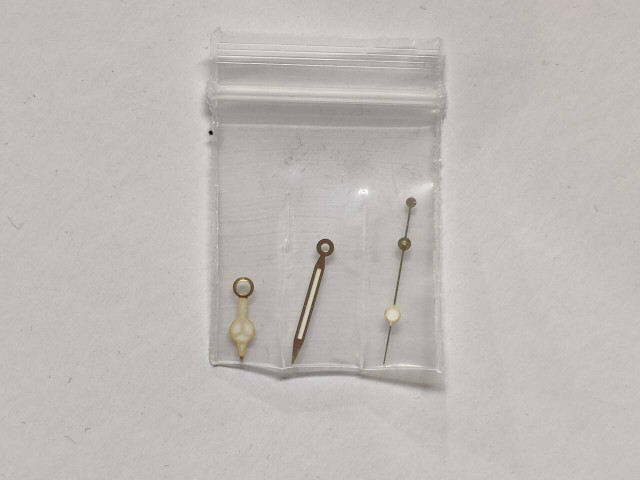
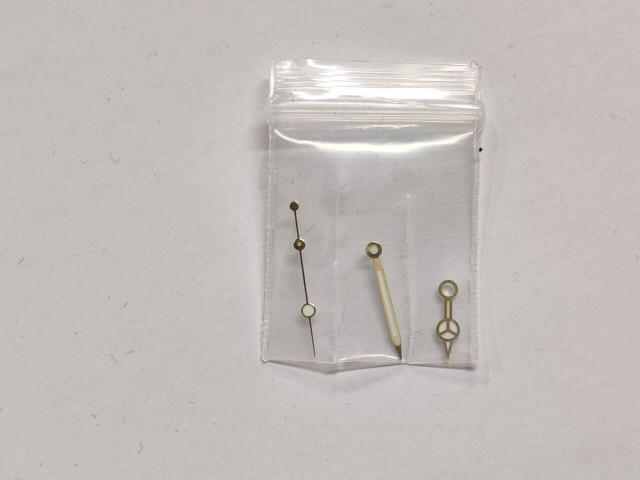
The seconds hand from Helen will not be used, instead I'm using a custom made seconds hand with the big lollipop.
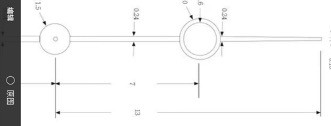
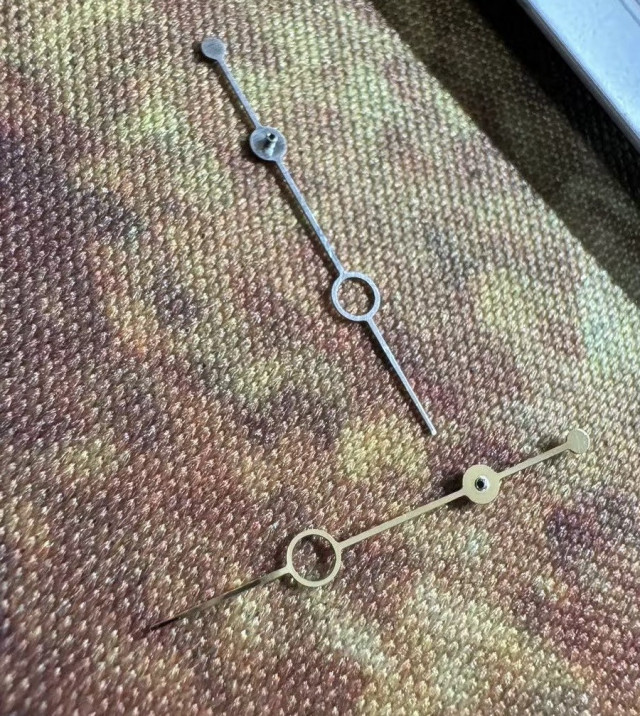
Crown
Athaya Vintage Brevet Crown
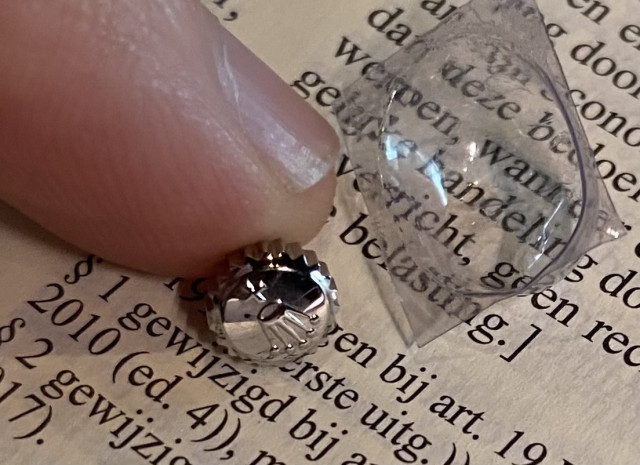
Amazing. Can you please share any more details on the sweep hand(s)?Updated OP - Crown arrived to my home. Hands arrived in Chinese warehouse.
